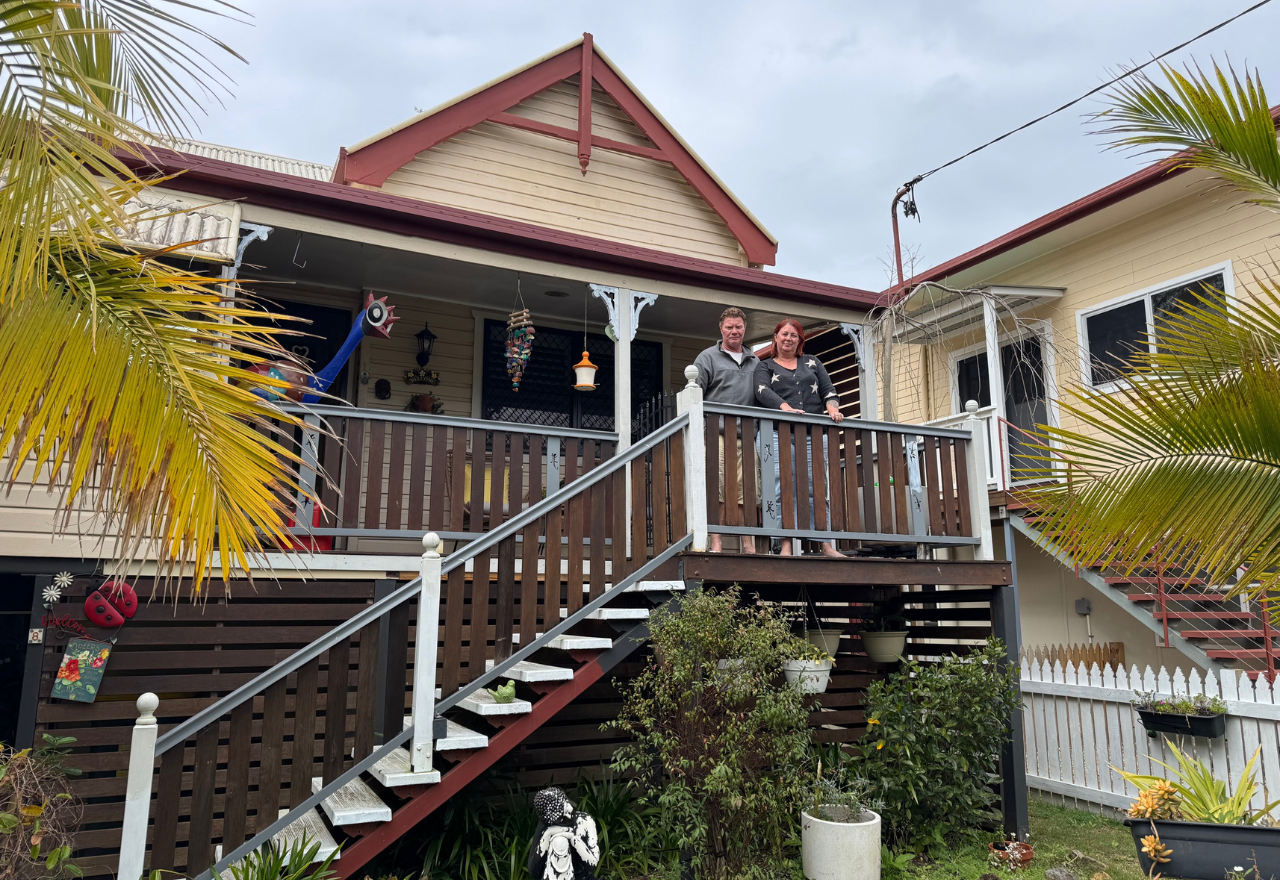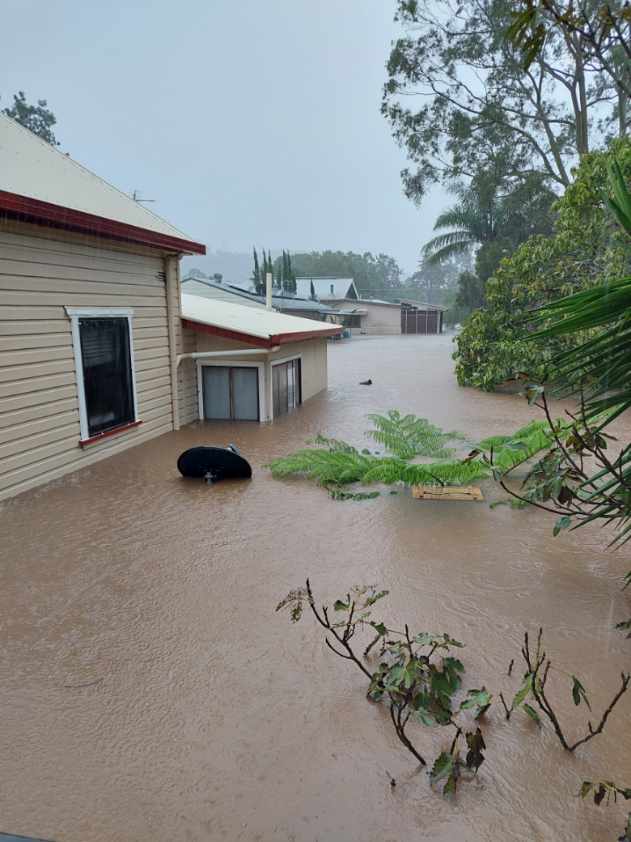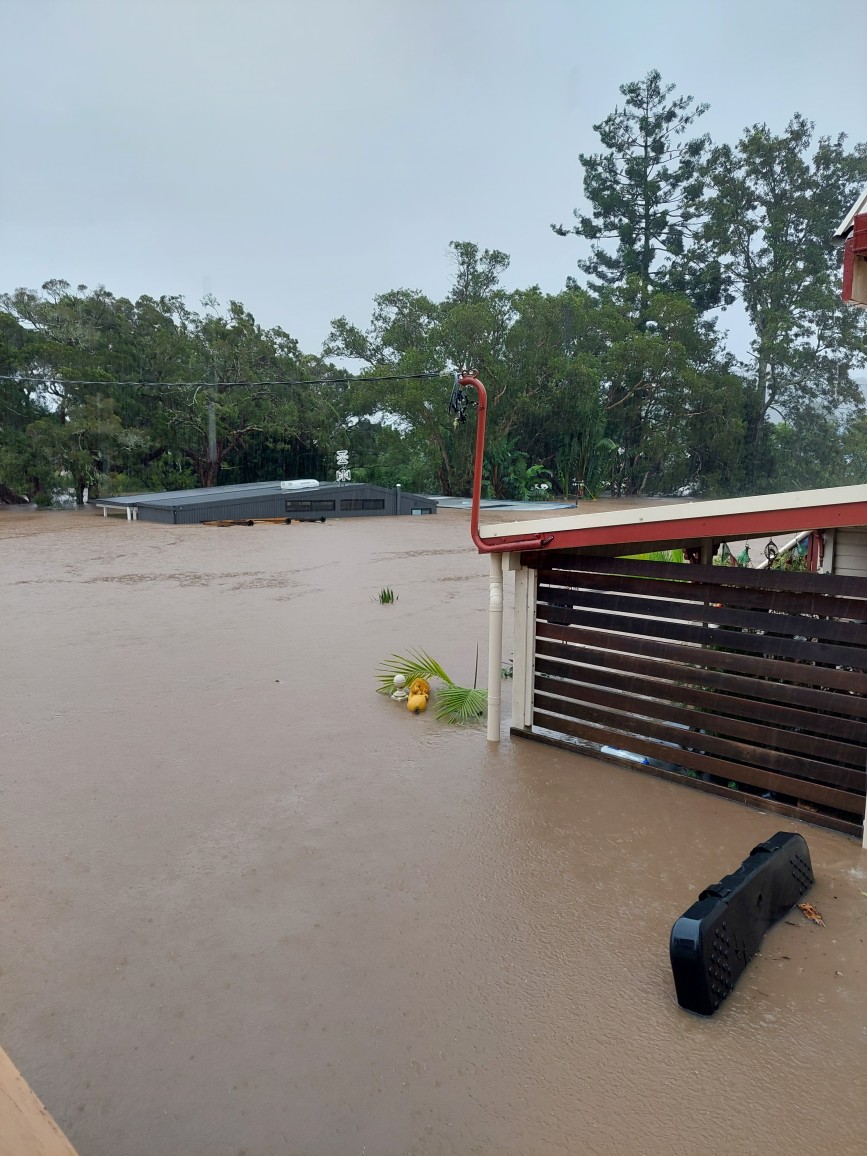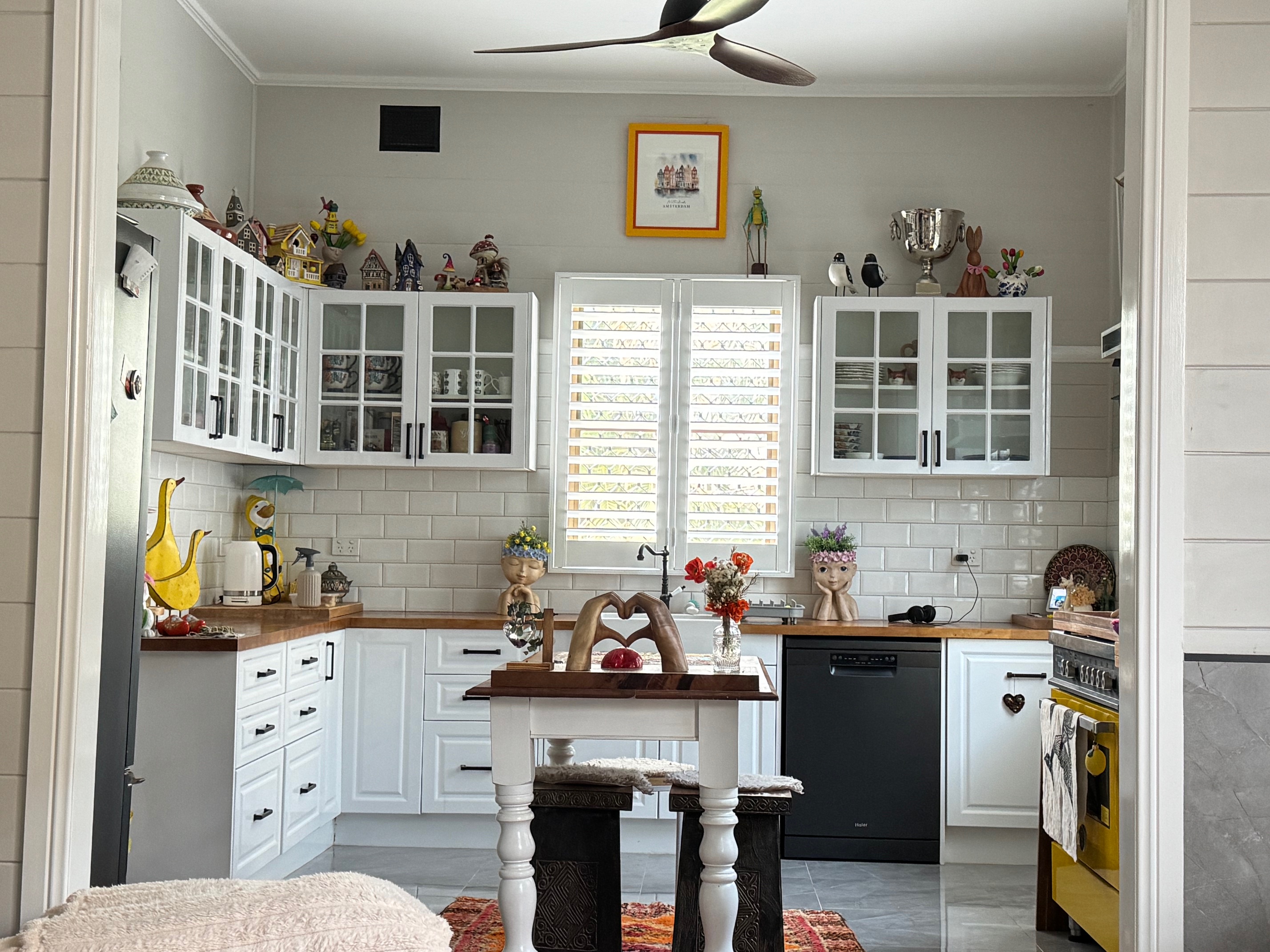Kerrie and Tony: one of many to slip through the RHP cracks
Simon Mumford
17 August 2025, 9:00 PM
 Kerrie and Tony Loveday on the front porch of their house in South Lismore
Kerrie and Tony Loveday on the front porch of their house in South LismoreHouse buybacks have been a contentious issue for the community since they were announced by Prime Minister Anthony Albanese and then NSW Premier Dominic Perrottet in October 2022.
Contentious because of the determination as to who would receive a buyback from the $880 million Resilient Homes Program (RHP) in the Northern Rivers and who would miss out.
Contentious because when the Northern Rivers Reconstruction Corporation (NRRC) first tabled the amount needed in NSW Parliament, it was $1.4 billion, and we ended up with $880 million.
This meant that some homeowners who wanted a house buyback would miss out. Kerrie and Tony Loveday are an example of people who would take a buyback if it were offered. However, that is looking extremely unlikely.
Part of the criteria used by the NSWRA (Reconstruction Authority) was to offer buybacks to those deemed to be at high risk in a future flood. That was determined by flood modelling at the time; however, no details were released to the public. And then there were 'extenuating circumstances', so the elderly, those receiving NDIS funding, the infirmed, those left traumatised, etc. These were determined on a case-by-case basis.
If you turn the clock back to February 28 2022, with the water level rising rapidly around you, then entering your house, and reports saying that this will be a 14-metre flood. What do you do?


Kerrie and Tony did what many people did that day: they swam to higher ground, which happened to be their neighbours' house, as their floor height was just over 14 metres. They swam together for safety and were hit in the back by a table and other floating objects from the fast-flowing current. This was while listening to the cries for help from other neighbours.
Kerrie and Tony have submitted five claims for a house buyback, but their harrowing experience was deemed not traumatising enough by the NSWRA, according to Kerrie.
"It was the second last appeal, so the fourth one, I got a phone call stating that, from what they can see in my appeal for a buyback, I haven't been traumatised enough. I kind of got a bit stroppy. I said, so it's not normal to swim from a front door. It's not normal."
"I had Kerrie on my back," Tony chimed in. "Because she was stressing out so much, pushing me under the water. We're getting hit by gas bottles and stuff coming out black and blue. It was crazy. They just don't seem to care."
It wasn't just getting themselves to safety. Marley, the family cat, and Ruby, the family pug, were rescued by Tony via a tub and suitcase in a return swim once Kerrie was safe.
Kerrie continued sharing her memories of that day.
"Hearing people screaming, like our neighbour across the road, she was 80, getting up and down on a ladder, and she was screaming, hoping somebody would rescue her. We felt really bad because the boat came about 11am to collect us. She was screaming for help, and we said, Go and collect her. He goes, No, somebody will come back for her.
"And then when we got onto Casino Street, all I remember is, it looked like a family of five, and they looked like deer in headlights, these big, wide eyes, just absolutely petrified on the awning of their roof."
"I just don't understand how they can feel that that wasn't traumatising enough. And they go, Oh, you've got no psychologist reports. Everyone deals with trauma in their own way. They don't have to go and see a psychologist.
"Just by sitting down and talking to people, seeing how they react after Cyclone Alfred that came through, there are a lot of people that are still suffering PTSD, and I am definitely one of them."
Kerrie and Tony's story improves a little at this point because Kerrie's brother, Tim, a wall and floor tiler, came down from Brisbane to help renovate the house and make it liveable again. He also brought his caravan with him, allowing them to live in the driveway for six months until they could move back in, as the threat of looters was high.

Rather than wait and see what the government was going to do, the Lovedays were back in their lovely renovated house towards the end of 2022 when the Resilient Homes program was announced and the buybacks were starting to be discussed.
"According to them, we're low risk. That's what they've said. We're low risk," Kerrie stated.
A few houses down Crown Lane, one home is fenced off after receiving a buyback. Around the corner on Webster Street, you can see a few more houses that have been bought back by the NSWRA. In this part of South Lismore, they are the exception rather than the rule.
The street has also changed as neighbours sold their homes for what they could get to move out of the flood zone. Some went higher up the hill to Goonellabah, while others left Lismore altogether.
Back to Kerrie's ongoing battle with the NSWRA to be offered a buyback.
"I was told after the last one, because I said, well, it won't be the last you'll hear of me. And they go, No, that is your last review. You are not allowed to put any more in. And I went, who said so? She went back and spoke to someone else, and they said, No, you cannot put any more reviews in. We'll approve you for a retrofit or a house raise.
"They've only had one retrofit approved from the last statistics I looked at. The hoops I've got to jump through. I have to give them all my receipts, which is not a problem, I've got a filing cabinet full of receipts, but they're all faded because they only last a certain amount of time, and my brother was the builder, so when they came through last time, they said, if you just get your brother to do a stat dec (statutory declaration), saying he's put the house back together, and if you've got proof that you've been giving him money every week. I said, Yep, not a problem. But then, when they phoned me three weeks ago, they said, Oh no, who told you that we can do that? They're always backpeddling.
"And then there's the house raising. That's an absolute joke, because I had a house raiser from Byron Bay who didn't even come here. He just Googled my house and said, Oh yes, gonna be about $200k to raise it. He knew what the government is putting in, because he goes, you'll get 100 (thousand) and buffer for another 20, so you'll get about 120,000, and you'll have to put in 80,000 or so. He said, I'll be out of pocket about $80,000."
Kerrie also explained that the land is on pug soil, like most of the Lismore CBD. This brings other challenges when raising a house.
"When it moves, things will shift. And he said, No. He goes, it'll be levelled straight up. And he goes, so your kitchen will probably pop, your walls will pop, tiles will crack. So, you'll probably be up for about $130,000 to $140,000 because your whole house would have to be redone."
The Lismore App contacted a local house raising company, who confirmed that damage to a house could occur if it were raised. Each situation is different.
There are a lot of variables for people like Kerrie and Tony, which raises the question of how to move forward.
Do they spend $80,000 to raise the house and possibly more, depending on the damage it would do to raise their house?
Do they stay put and go through the retrofit process to recoup money spent on the renovation and continue to be traumatised when it rains?
Even if they were granted a buyback, the price they may be offered may not reach the pre-2022 flood levels of $800,000 to $850,000 from a real estate agent. The common range is $500,000 to $650,000.
Regardless of which way Kerrie and Tony turn, there appear to be both inconvenience and additional costs. The positive sign is that they do not have a mortgage, but removing themselves from the floodplain and purchasing a property out of the flood-zone, would change that scenario.
"At our age, we really don't want to have another mortgage. We'll cross that bridge when we come to it," Kerrie ended.
The Lismore App contacted the NSWRA for comment. An RA spokesperson said, "We do not discuss individual cases for privacy reasons. However, the Authority is happy to meet the property owners to discuss the issues raised.
It is another tale of the 2022 big flood trauma and how people move forward with their lives. The options are not always palatable from a Resilient Homes Program that was flawed from the start.

